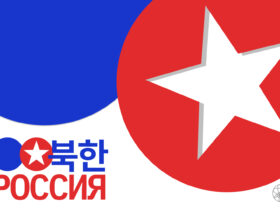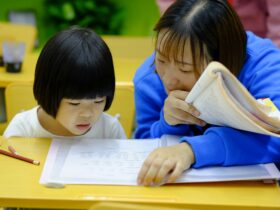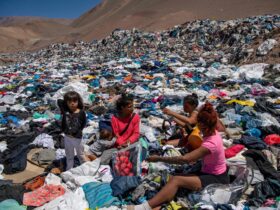Background of the War
In July of 2011, South Sudan became independent from Sudan and to this day, it is one of the youngest countries in Africa. The country has long been characterized by having various ethnic groups, cultures and tribes. However, the beginning formation of Democracy for South Sudan was quickly challenged internally in December 2013 due to the clash of two main ethnic groups.
These two main ethnic groups are known as the Dinka and Nuer, which have in the past, competed against each other for land resources and water. Although they enjoyed periods of tolerance and have even intermarried at certain points in history, competition for political prowess and water resources has never ceased, as these groups are always forced to migrate for areas with better cultivation, leaving clashes and conflicts for resources inevitable.
The dispute that ignited the current civil war was an ethnic conflict between South Sudanese President Salva Kiir (a Dinka) and then-Vice President Riek Machar (a Nuer). Starting with President Kiir dismissing Vice-President Machar from his duties. This action caused a string of violence between Kiir’s Dinka guards and Machar’s Nuer guards, and Kiir accused Machar of plotting a coup d’etat. Kiir also claimed that the violence perpetrated by Machar’s guards was an unsuccessful attempt at overthrowing his rule. These accusations then set off rebel groups from both ethnic parties to take sides with their respective leaders, drastically increasing the scale of the conflict.
Now, the war is mainly between the Sudanese government’s militia comprized of mainly Dinka’s and the opposing rebel army composed of mainly Nuer’s. The government militia, largely lacking organization and professionalism, ultimately chose sides between the leaders and so set off two forces fighting for these two ethnic parties, the Dinka and Nuer. This conflict has now spiraled into one of the world’s largest displacement crises, with an estimated 4.5 million people displaced and about 400,000 dead.
Children At War
This is not the first time South Sudan has experienced prolonged periods of civil war and issues of independence. Previously, before South Sudan declared independence, the country was involved in decades of civil war on similar grounds regarding ethnic differences and resource usage. However, an issue that stands out in this civil war is the recruitment of children as child soldiers. As recorded by the U.S. State Department, both the government and opposing forces have recruited 19,000 child soldiers to fight in the war since the conflict began in 2013. As of 2021, this number is predicted to be on the rise in expert opinion. The government forces include the South Sudan’s People’s Defense Forces (SSPDF) and the South Sudan National Police Service (SSNPS). Other militias that have been recruiting child soldiers include the Sudan People’s Liberation Army-North (SPLM/NA). While the tactics of recruitment are unadmitted, they are nonetheless dangerously coercive. These children serve as soldiers to execute violence against other child soldiers. Some even hold ranking positions as staff, security roles and checkpoint guards. No political entity has yet to hold any of the individual forces accountable for perpetuating the recruitment and use of children in a fighting force.
In 2018, a Sudanese ceasefire and peace agreement was made. While both forces agreed to refrain from the recruitment of child soldiers, this agreement has yet to be fully implemented. While the slowing of recruitment is unknown, many children remain in the ranks of the militias. In addition, the slow implementation and delay of the agreement has only furthered the violence, rather than ending it.
While child recruitment continuation is largely unknown, violence in certain parts of the country continues. About 2,240 people were reported dead from such violence in 2022. Elections, which were set to occur in 2023, have now been postponed for December of 2024. Citizens, especially opposition forces, continually question the strength of the state if they cannot make due on their promise of an electoral process. Edmund Yakani is the executive director for Community Empowerment for Progress Organization, a local advocacy group in South Sudan. In an interview with AP World News, Yakani said that “the return of the country to violence is more evident than the country staying in stability.” For child soldiers, the lack of electoral implementation and total cease of violence presents uncertainty for support and resources for children to get out of the ranks of warfare. Thus, continuing the cycle of recruitment and violence.
Response From the United Nations
The United Nations’ Action Plan to address the child soldier issue has been largely criticized for its lack of true understanding of the situation and the ethnic disparity. Many have characterized the root of the problem as an ethnic narrative issue that many soldiers and children have been coerced into executing. The plan aimed to prevent violations against children and has allowed for the release of hundreds of child soldiers. However, due to the weak implementation, both forces have yet to fully discharge child soldiers with many also lacking awareness of such a plan to release children from fighting.
The UN’s response to the humanitarian crisis of displacement has also been addressed by the United Nations Security Council monitoring borders and the operation of delivering humanitarian aid. Even so, about 9.3 million people need humanitarian aid, and the UN has yet to address the 67% of individuals who live below the poverty line in the country, with these numbers and figures exacerbated by the war.
The displacement crisis and child recruitment of soldiers remains an issue with millions still without a place to seek refuge and many children still in the ranks of militia forces involved in the civil war. The violation of child rights is a crucial topic that remains at large in South Sudan. Look no further to understand the caliber of this violence that the usage of children who still face a lack of support and resource to get out of this cycle of violence. Beginning as a deep-seated ethnic clash between the Dinka and Nuer, it has now turned into a question of how to effectively transfer power within the South Sudanese government and rehabilitate these children affected by conflict.







